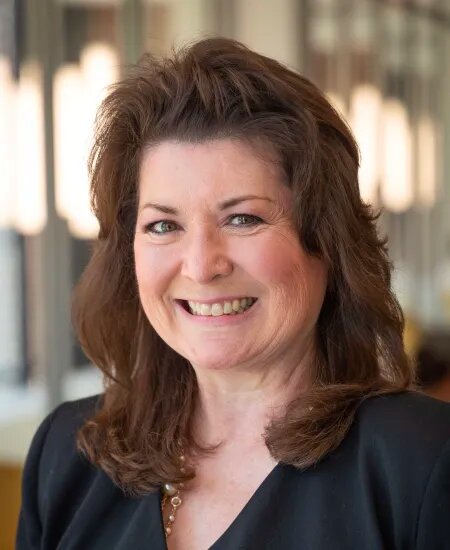The University of Kentucky has emphasized its support for rural journalism for two decades.
Home of the famous powerhouse men's basketball team, the University of Kentucky’s campus is located in the heart of Lexington, a city of about 322,000 people. The combined statistical area supports nearly 750,000, easily surpassing the definition of urban.
The University of Kentucky itself serves about 30,000 students. Meanwhile, three-fourths of the nation’s incorporated towns have fewer than 5,000 people. At least six of those towns would be smaller than the UK student body.
Within the buzz of this large group of students, housed in the heart of one of America’s 60 largest cities, the Institute for Rural Journalism and Community Issues (IRJCI) is celebrating its 20th year on campus. The IRJCI is designed to help students prepare for journalism work in rural areas and to provide training and other resources for small news organizations.
Benjy Hamm serves as the new director of the IRJCI, having taken over the reins from Al Cross, who had spent 20 years in the role and remains on staff in a part-time role as he transitions into retirement.
“We have a mission that spreads across the country,” Hamm said. “The people who developed it at the time were well ahead of the curve and anticipated where we are today. They were interested in supporting and sustaining rural journalists and rural communities because of concerns about how things were going in those communities for local newspapers. Local newspapers were the only source of local news and information in many areas.”
Hamm said the need to support rural journalism has increased in the past five years as more newspapers have shuttered, harming the communities that news outlets have vacated. Without trusted journalism, more people are susceptible to fake reports and false rumors spread on social media.
Among the activities supported by the IRJCI is a national summit on journalism. The event has been held for three years, and “what it does is bring together people from across the country with expertise ranging from people who are involved in turning local news organizations into effective nonprofit business models to people who are working with public policy and journalists who are trying to improve rural journalism and communities,” Hamm said.
Every year, the IRJCI gives the Tom and Pat Gish Award for courage, tenacity and integrity in rural journalism. This year’s award is going to Craig Garnett, the publisher of the Uvalde Leader-News newspaper in Uvalde, Texas. The rural newspaper pushed for answers in the wake of the mass shooting at Uvalde Elementary School, quoting police officials who could not explain why it took so long for units to enter the school and writing critical editorials about the response. A reporter at the newspaper lost her fourth-grade child in the shooting.
Hamm and others are coordinating a day-long workshop in Austin, Texas, this month (February 2024), where the award will be given to Garnett. Hamm said the award recognizes that investigative and watchdog journalism can be more difficult in smaller communities where resources are spread thinner and the journalists may have to hold to account the very community members they see and interact with. The February workshop is a collaboration with the IRJCI, the Texas Center for Community Journalism and the University of Texas-Austin.
“Whether you're going to a major metro or a community weekly, journalism is journalism,” Hamm said. “Why the emphasis on rural journalism? One of the main reasons for that, historically and what led to the origin of the Institute, was the belief that there’s a lot of great work being done in rural communities, but they don’t always have the same support staff. They don’t always have the same training opportunities, and they don’t always have the same issues that are taking place in larger cities. So, for example, agriculture is huge in many rural communities in Eastern Kentucky and Western Kentucky. In West Virginia, it”s coal mining — there will be other issues there,” as opposed to urban settings.
“I sat in once at The New York Times when they were deciding A1 issues and stories. They had a room full of editors and the Washington bureau on the line. And I sat and visited a one-person newspaper in rural Kentucky and talked to the person about what was going on Page 1. They're fundamentally different approaches. Both can be excellent. It’s just different.”
With Hamm’s help, the university prepares students to know how to step into rural news organizations.
Of the 30,000 students on campus, 719 are enrolled in journalism classes. That’s larger than many small towns dotted across America. Of those, 204 are majors or pre-majors in the journalism program.

UK’s overall student population is bucking national trends and has increased enrollment over the last several years. The same can be said for the journalism program, where, according to Dr. Erika Engstrom, the director of the School of Journalism and Media College of Communication and Information, some of the program’s entry-level courses have exceeded capacity.
As many journalists understand, newly graduated students are not likely to grab roles at more prominent newspapers just out of college.
“UK is known for our excellent preparation and training for our students to enter the workforce straight out of school or even before graduating,” Engstrom said. “Historically, we have offered a community journalism course where students report for local newspapers.” She added that Hamm’s expertise has added to the educational experience, as he teaches a course on media management and entrepreneurship.
Engstrom said the school offers three journalism sequence tracks: print/multimedia, broadcast news and sports journalism. The multimedia track is emphasized, with digital and visual storytelling earning top 10 finishes in nationwide contests.
“Sports reporting and promotion is highly popular among students — not surprising given the range of sports at UK,” Engstrom said. “Another one of the ways we are expanding is developing courses in media literacy, news and journalism literacy and visual literacy. In this manner, we’re looking to provide critical thinking tools for all students.”
In the coming year, Hamm said one of his priorities as the new director is to get out more and have conversations with rural editors and publishers. He thinks it will take a combination of business models to sustain journalism throughout the country, and he’s looking forward to having those conversations. The Institute is also building a new website. The IRJCI also publishes a blog and partners with a health news enterprise in Kentucky.
“With the state of local news and just how many of these smaller newspapers have gone out of business, that’s one of the main reasons we’re creating a new emphasis on helping us sustain the journalism in these communities,” Hamm said. “We work with newspapers, radio and online news sites, but it’s still true that, in most rural communities, the primary if not the only source of independent news coverage is a newspaper.”
 Bob Miller has spent more than 25 years in local newsrooms, including 12 years as an executive editor with Rust Communications. He also produces an independent true crime investigative podcast called “The Lawless Files.”
Bob Miller has spent more than 25 years in local newsrooms, including 12 years as an executive editor with Rust Communications. He also produces an independent true crime investigative podcast called “The Lawless Files.”
Comments
No comments on this item Please log in to comment by clicking here